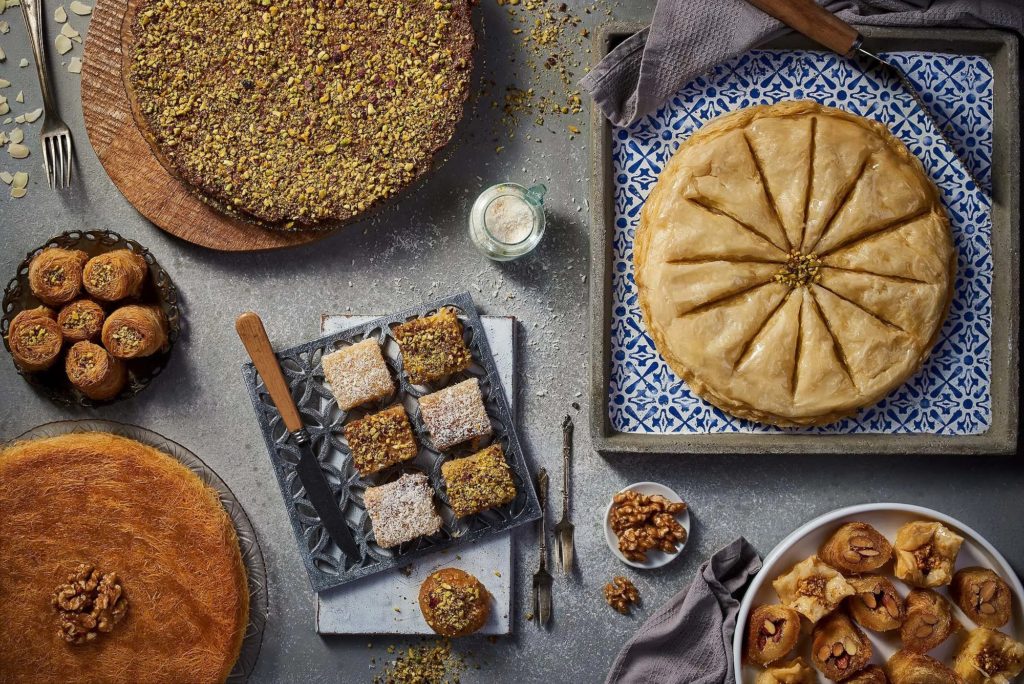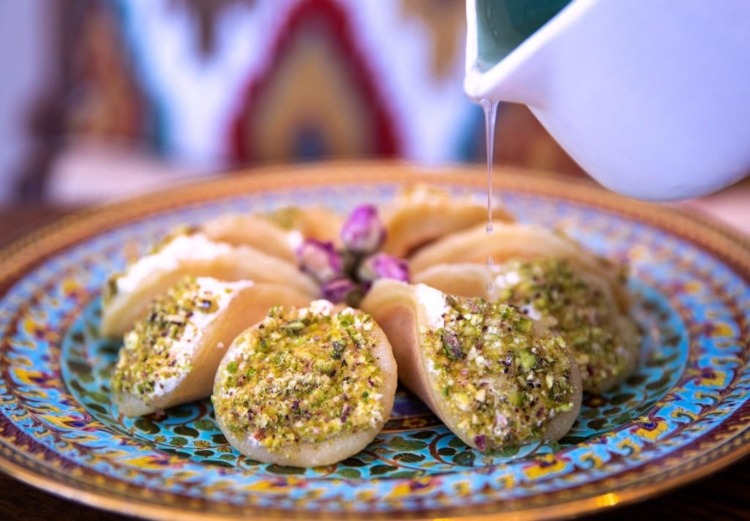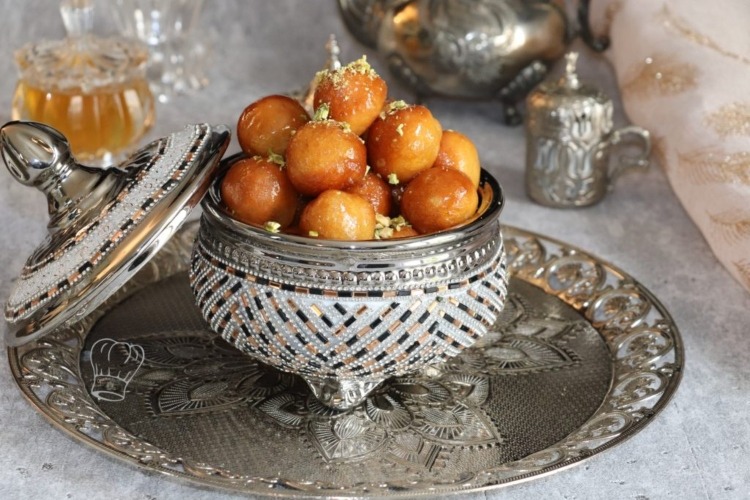Foodies of the MENA region are on cloud 9 during Ramadan not just because of the heavy, hearty meals at every iftar but also for the delicious dose of sweet desserts we get to enjoy with family and friends. If you’re a true foodie, you must’ve wondered where all these desserts originally came from? For a bit of fun, we’ve done some research to help you find out.
Qatayef
Who doesn’t love pancakes? When it comes to the Middle East we have our very own version called Qatayif made of a yeast batter cooked low and slow on a griddle where it is deep-fried to crisp perfection. Typically shaped as a cat ear, this dessert is usually served with either a filling of whipped cream and nuts or sometimes raisins and nuts. Like most desserts on this list, food historians differ when it comes to its origins but most sources say it dates back to the Fatimid Dynasty and it is known to have originated in the Levant region.
Baklava
This well-known dessert made of layered filo dough stuffed with a crushed nuts has been a fan favorite not just locally but globally as well. When it comes to the history of the scrumptious dessert, things take a controversial turn as many countries and regions claim the baklava to be their own whether its Greece, Turkey or the Middle East in general. Stepping back, it is widely known that we got this dessert from Turkey specially from the Nomadic Turks of the 11th Century as back then, they were known for making layered bread called yuvgha which when translated means “pleated or folded bread”.
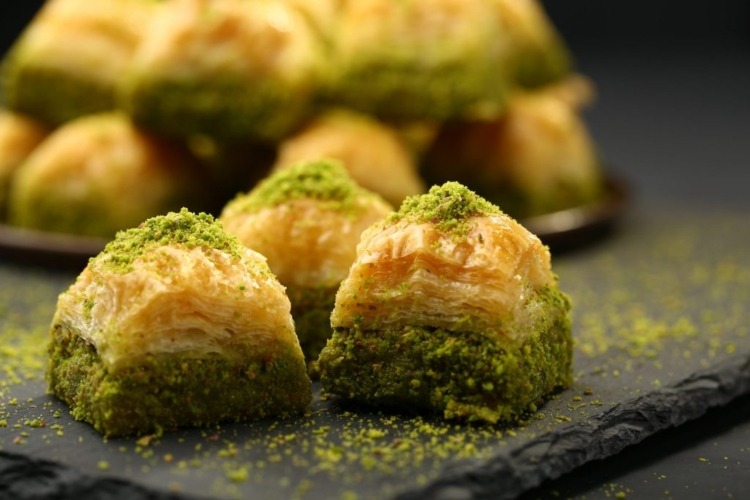
Kunafa
This is the ultimate Arab dessert loved by almost everyone for its undisputed delicious sweet flavor profile. Made by stuffing cream, cheese or other dairy products onto two layers of shredded phyllo pastry that is then covered in sugar syrup and garnished with nuts. When it comes to its origins, most sources claim that it hails from Nablus, a Palestinian city in modern-day West Bank. Other sources say that the dessert traces back to the Umayyad dynasty when it was eaten as a suhoor meal in Damascus.
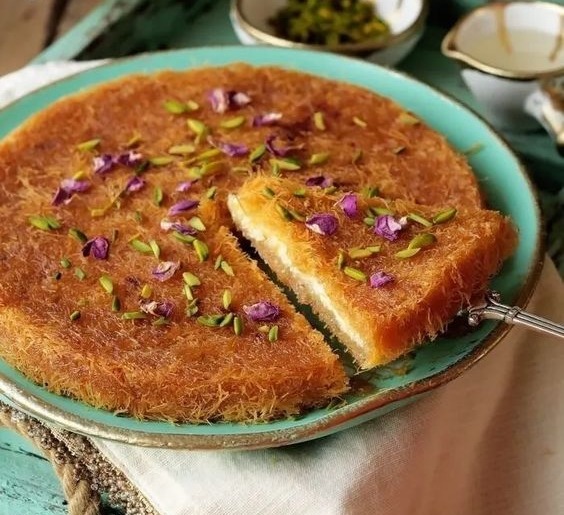
Balah El-Sham
Internationally popular, known worldwide by many different names like Churro in Spain and Tulumab in Turkey, this simple dessert is a deep-fried Choux pastry drenched in either sugar syrup, honey, cinnamon sugar, or chocolate depending on where you live. Despite the fact that Choux pastry makes you immediately think of France, most historians agree that Balah El-Sham originated back in the Ottoman Empire days.
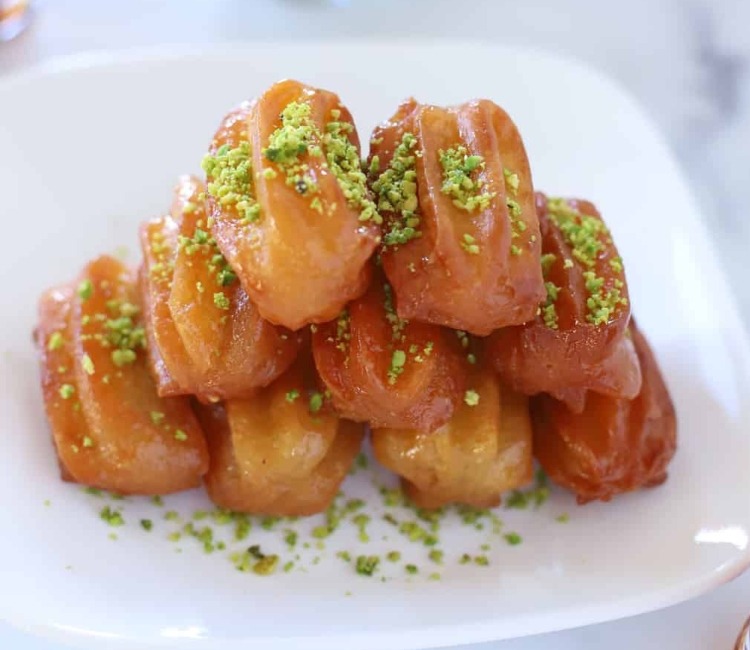
Lokmat El-Kadi
Known as “Lokma” in Turkey, “Zalabia” in parts of Egypt, and Greek doughnuts in the West, this dessert is known as the infamous deep-fried ball-shaped doughnut topped with everything from powdered sugar to honey. It is said to have dated back to medieval times and maybe even in Baghdad during the Abbasid Caliphate of the 13th Century as it appeared in many cookbooks from that time.
Basbousa
Known as the cake-like crumbly dessert made from semolina, flour, eggs and dairy, basbousa holds a special place in the hearts of all Arabs. The special dessert would be served baked and hot from the oven, soaked in delicious sugar syrup. Widely popular, Arab countries would prepare it in different ways whether with almond powder and a generous topping of hazelnuts in Egypt or with pistachio powder and coconut in Lebanon and Palestine. When it comes to its origins, an earlier rendition of the dessert was called revani, known as a classic cake from the Ottoman Empire.

It is always fun to take a step back and know where our rich culture and cuisine comes from especially during a special time like Ramadan when families and friends gather together and enjoy the best food and desserts the region has to offer.


